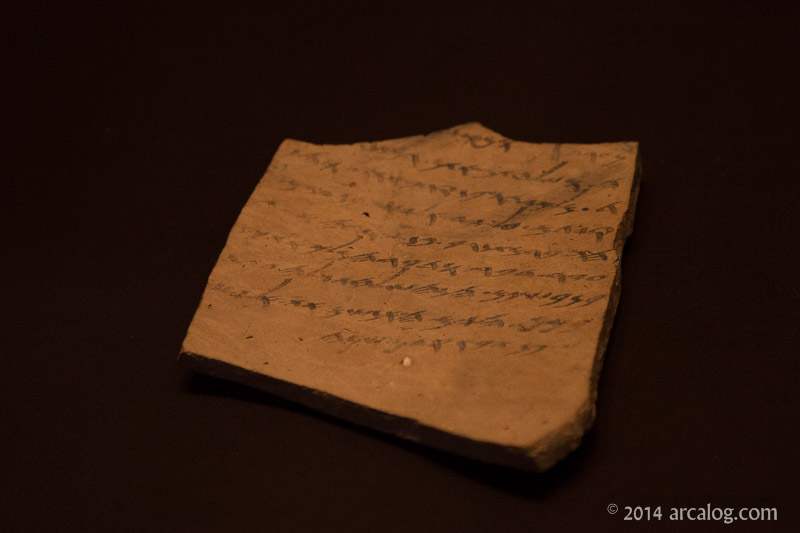The following is the summary of a little book by Jeffery Tigay called “You Shall Have No Other Gods”. The premise is simple: Name lists compiled from ancient texts tell us about what deities were worshiped at different times. For example, from a list of names of 90 families from Sippar (Old Babylonian period) we learn that parents named their children after Sin, Shamash, and a number of lesser deities. So too, the names for the kings of Assyria (8th-7th centuries BC) were compounded with Asshur, Shamash (the sun), Sin (the moon), and Sherua (the consort of Asshur), etc. One final example is a list of names found in the temple of Eshmun near Sidon. These names are compounded with seven different deities: Baal, Ramman, Sism, Shamash, Eshmun, Tannit, and Astarte.
One would expect a significantly larger percentage of children will be named after the chief deity of a city or a temple but this not the case. In Sippar, the chief deity of the city, Shamash, appears in only 20% of the theophoric names, with Sin following close behind with 15%. In Asshur during the 15-14th centuries, the god Asshur appears in only 17% of the theophoric names. In name lists from the Eshmun temple, Astarte appears in 23.8% of the theophoric names, with other deities, including Eshmun, appearing with lesser frequency.
We can conclude from this:
- The names of people in ANE were compounded with the names of the many deities that they worshiped.
- The chief deity is not represented in a significantly larger proportion of names.
- Children were commonly named after astral deities, storm deities and goddesses.
Ok, so there is nothing particularly earth shattering here! But it gets more interesting when we catalog the names in the Bible and compare our results with those mentioned above. We find that 96% of the theophoric names in the Bible are Yahwistic (this count excludes names with ‘el’ in them). The other 4% may be considered pagan. None of the pagan names are specifically astral deities or goddesses. This is striking evidence that the worship of YHWH alone was orthodoxy from an early period – certainly much earlier than the reforms of Josiah.
It might be argued that the names in the Bible were changed at a later date in order to make them fit the monotheistic tendencies of a late redactor. However, with the discovery of a large number of Hebrew inscriptions over the last 100 years or so, we have been given a way to check the name lists in the Bible against a list of over 1200 Judean and Israelite names compiled from these inscriptions. According to Tigay, these inscriptions date from the 8th to the 6th centuries and are fairly evenly distributed over this time period.

Here is a break down of the names compiled from the Hebrew inscriptions (from Tigay):
- 557 – names with YHWH as their theophoric element.
- 77 – bear names with the theophoric element ‘el
- 35 – pagan (of these 7 refer to Horus, 6 to Baal, 4 Shalim, 3 to Qaus, 3 Mawet, 3 Min, 2 Gad, 2 Asher)
- the remainder are not theophoric
If we crunch the number we get 94.1 percent Yawhistic vs. 5.9 % pagan, roughly the same proportion of Yahwistic / pagan names that we find in the Biblical text. (1)
So what is the takeaway?
- Israelite names were not compounded with the names of goddesses. This accords with the Pentateuch, which gives no place to a goddess. When the the prophets condemn the people for worshipping Asherah, they are not inventing something new. The message of the prophets must be preceded by a law code that prescribed a way of life to which the broad majority of people adhered. How does one explain the onomasticon any other way?
- Israelite names were not compounded with names for the sun, moon or stars. This too, is in accord with the Biblical injunction against worshipping the starry host.
- The reforms of Hezekiah and Josiah were reforms. The revolution began with Moses.
Tigay notes that there is no evidence that the Israelites had any regard for foreign deities. He concludes, “What is more surprising is to find similar indifference to nature gods whose spheres were not limited to specific nations, such as the sun god, rain gods, and fertility gods. The Israelites surely recognized that they were as dependent on the sun and rain and fertility as their neighbors were. If the bulk of the Israelites ignored the gods of these phenomena, is it likely that they considered these phenomena divine or independently effective? A unilatry which ignores the gods of other nations can be classified as monolatry, but a unilatry which ignores phenomena on which all nations depend looks implicitly like monotheism.” (Tigay 1986, 38)
A question arises from all of this. If the Israelites were such good monotheists, what do we do with the widespread condemnation of the worship of the stars, the queen of heaven, etc. in the prophetic books? One possible explanation is that the naming of children was based on tradition that did not change even as the people engaged in idolatrous and synchretistic forms of worship.
Notes:
(1) It is not always clear whether the pagan names are actually pagan. For example, Baal means ‘Lord’ and could have been used as an epithet for YHWH. Only later, when Baal worship gained prominence, did Baal become associated with a pagan deity. Scribes changed the ‘baal’ element in the name to ‘boshet’ meaning ‘shameful’ – a somewhat unsubtle emendation of the text!
Bibliography
Tigay, J. H. (1986). You shall have no other gods : Israelite religion in the light of Hebrew inscriptions. Atlanta, Ga., Scholars Press.